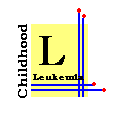

What is a Bone Marrow Transplant ?
The process of bone marrow transfusion (infusion) is similar to a blood transfusion . It replaces defective or missing marrow or is used to replace the blood cells or marrow after a high dose of chemotherapy or radiation . However, since the body is programmed to reject foreign tissues (including marrow tissue from another person), the physician has to give intensive immunosuppressive therapy to the recipient before the marrow infusion, so that the donor marrow is not rejected.
How is BMT done ?
1 ) The bone marrow of a donor, related or unrelated, is harvested .
2 ) After high dose of chemotherapy or radiation therapy , the marrow or blood cells are dripped through a catheter into the patients' bloodstream .
3) The cells find their way naturally into the marrow spaces of the bones .
4 ) Once there , they begin to grow and multiply , repopulating the bloodstream with white cells , red cells and platelets .
Why do you need to do a BMT ?
1 ) A BMT replaces absent or abnormal stem cells with functional stem cells allowing production of blood cells .
2 ) For patients with cancer , a BMT replaces stem cells that are killed as a side effect of very high dose of chemotherapy and radiation therapy that are given to kill cancer cells.
3 ) Bone marrow transplants can also be done in certain genetic disorders involving marrow cells. The transplanted marrow cells replace defective or absent cells in the marrow .
Types of BMT
Allogeneic - comes from person other than patient.The donor can be related or unrelated.
Autologous - the patient is given his own bone marrow or peripheral stem cells . The advantages of this kind of BMT is that it reduces the risk of transplant related mortality and that there is also a low risk of graft-versus-host disease . The disadvantage is that the risk of a relapse is higher than that of allogeneic BMT.
Peripheral blood stem cell - the marrow cells are obtained from the blood instead of the marrow itself. We can do this because marrow cells are present in the blood, though in small amounts. The donor can be given certain drugs to increase the number of circulating marrow cells, and the cells then collected from the blood using special machines (apheresis machines, also known as cell separators).
Syngeneic - the patient is given marrow from an identical twin .
Outpatient BMT
Most marrow transplants had required hospitalizations. However, a few centres have been trying doing BMTs on an outpatient basis, usually for autologous transplants.